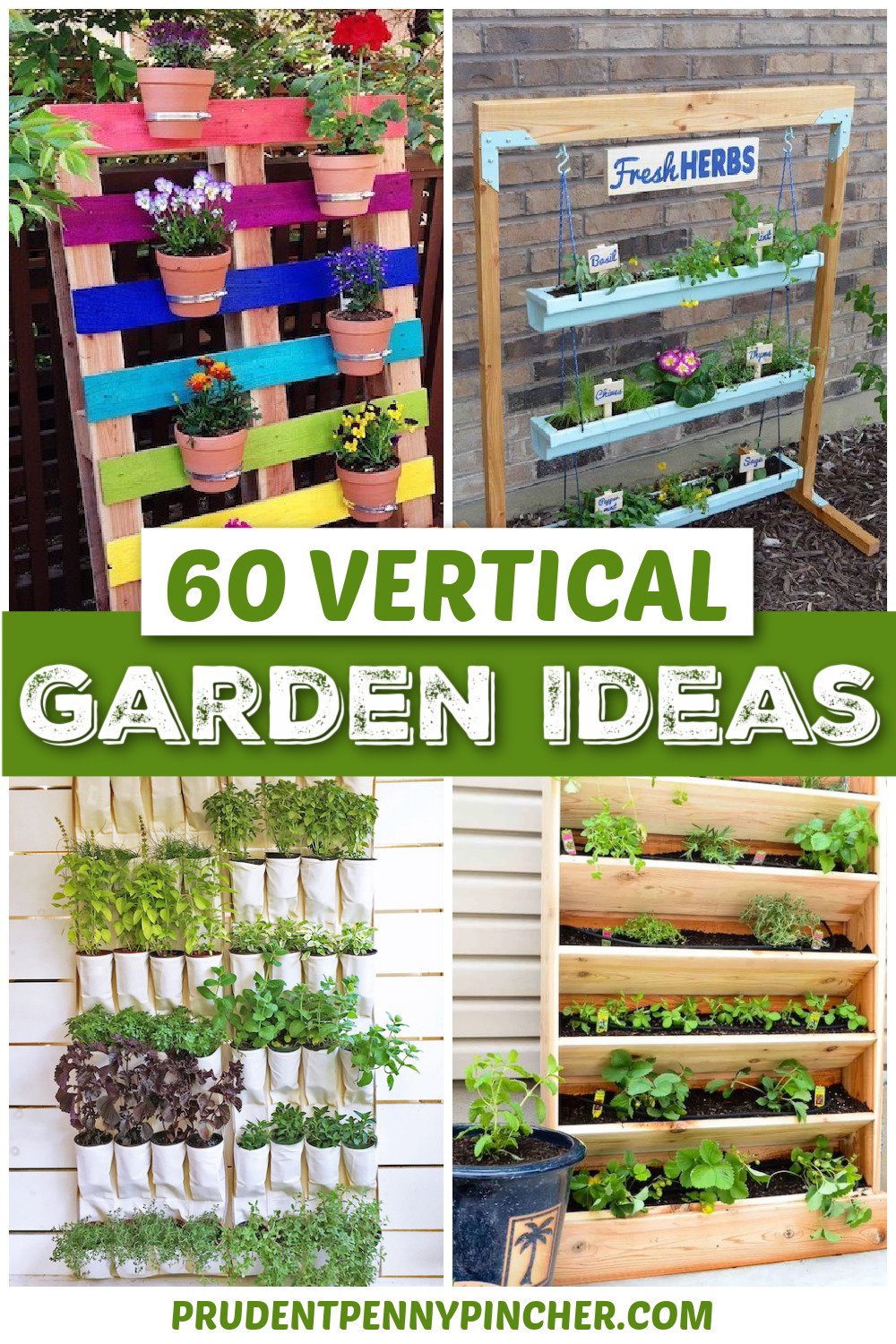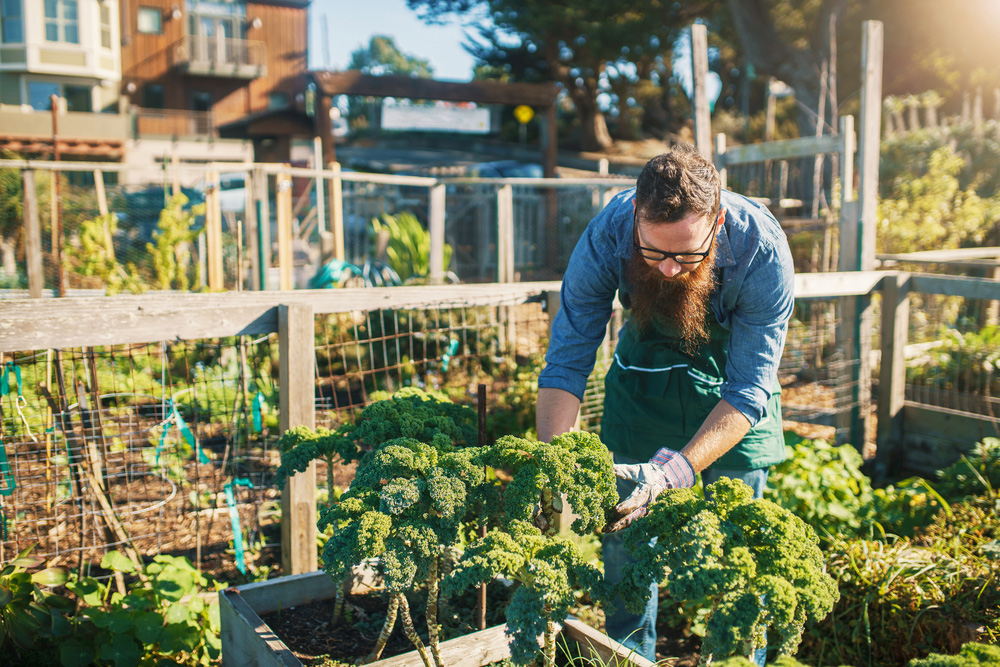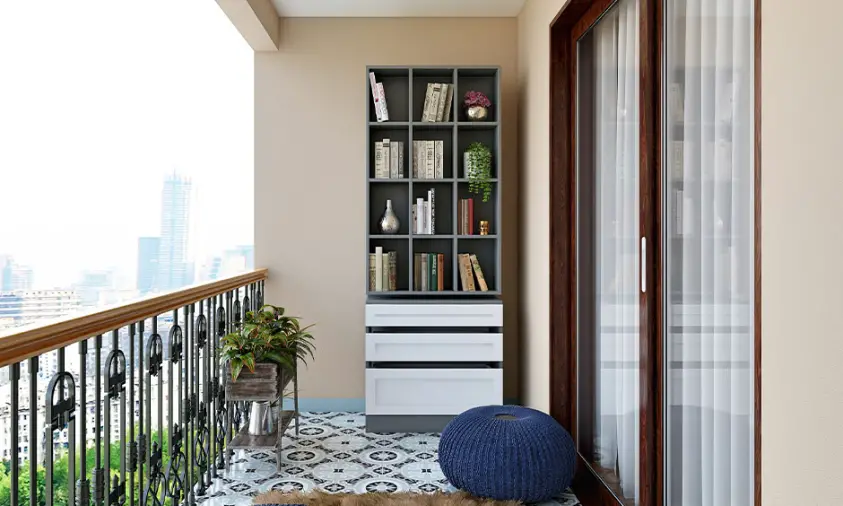Essential balcony gardening tools include hand trowels, pruning shears, watering cans, and gloves. These tools facilitate plant care in limited spaces such as balconies.
Balcony gardening in urban areas like Austin, Texas, is gaining popularity among residents seeking to add greenery to their living spaces. A few square feet of outdoor space can be transformed into a lush oasis with the right tools and some creativity.
Table of Contents
High-quality balcony gardening tools not only make the process of planting and maintaining your garden more efficient, but they also ensure the longevity and health of your plants. Whether you’re a seasoned gardener downsizing to a balcony space or a beginner looking to start your gardening journey, having these tools at hand is the first step towards creating your urban green haven.
Introduction To Balcony Gardening
Balcony gardening brings the verdant beauty of nature to urban dwellings. With limited space becoming the norm in bustling cities, innovative green enthusiasts are transforming their balconies into lush escapes. This introductory guide will explore why these gardens capture our imaginations and explain the benefits they offer to urban gardeners.
Understanding The Appeal Of Balcony Gardens
The allure of balcony gardens is undeniable. As a sanctuary above the city, your balcony can be a personal retreat where greenery thrives, and stress dissipates. Ideal for modern lifestyles, these miniature landscapes provide a unique opportunity to engage with nature despite living in a concrete jungle.
Benefits Of Cultivating Your Own Small Green Space
- Enhanced Well-being: Surrounding yourself with plants can boost your mood and improve air quality.
- Educational: Gardening teaches patience, care, and the cycle of life, no matter the age of the gardener.
- Food Source: Grow your own herbs, vegetables, or fruits; a rewarding and organic option for your kitchen.
- Eco-friendly: Contributing to the ecosystem, balcony gardens help reduce your carbon footprint.
Essential Considerations Before Starting A Balcony Garden
- Space Assessment: Determine the size and weight capacity of your balcony to select appropriate plants and tools.
- Sunlight Exposure: Understand the sunlight your balcony receives to pick suitable plants for your environment.
- Climate: Choose plants that can thrive in your city’s weather conditions.
- Local Restrictions: Be aware of any building regulations or policies that could affect your gardening plans.

Credit: http://www.prudentpennypincher.com
Must-have Tools For Balcony Gardeners
Transforming a balcony into a lush green sanctuary requires not just dedication and passion but also the right set of tools. A successful balcony garden hinges on efficiency, especially when it comes to space constraints. With the essential tools in hand, even the smallest of spaces can yield an abundant harvest and a blooming oasis. Let’s delve into the quintessential toolkit every balcony gardener should possess.
The Ultimate Tool Checklist For Balcony Garden Success
-
- Trowel: For planting and moving soil.
- Pruning Shears: Essential for trimming and shaping plants.
- Watering Can with Long Spout: Offers precision in watering with minimal spillage.
- Gloves: To protect hands from thorns and soil-borne bacteria.
- Hand Rake: Helps in aerating the soil and removing debris.
Additional tool items can be included as needed
Now that you have your basic list, let’s focus on ergonomic and space-conscious options that are perfect for a balcony setting.
Ergonomic And Space-saving Tool Recommendations
- Foldable Seats/Cushions: Save space while providing comfort during gardening tasks.
- Collapsible Watering Cans: They flatten for easy storage when not in use.
- Stackable Pots: Optimize vertical space for more greenery without crowding the balcony.
- Multi-tool Sets: Look for tools that can serve multiple functions to reduce clutter.
With comfort and practicality addressed, look into the specialized tools designed for container and small-space gardening.
Specialized Tools For Container And Small-space Gardening
| Tool | Use |
|---|---|
| Soil Test Kits | Measure soil pH, moisture, and nutrients to manage plant health in containers. |
| Drip Irrigation Kits | Ensure consistent watering for your plants, especially vital in confined growing areas. |
| Hand-held Mini Cultivator | Makes tilling in small containers easier and prevents root damage to neighboring plants. |
| Telescopic Pruners | Allow you to reach farther and cut with precision without the need for bulky tools. |
Armed with these essential tools, balcony gardeners are well-equipped to nurture a thriving green space that brings both bounty and beauty to urban living.
Maximizing Your Balcony Garden
Maximizing Your Balcony Garden starts with the right approach and essential tools. A balcony garden can be a lush and vibrant oasis, even with limited space. With thoughtful planning and appropriate techniques, it’s possible to transform your balcony into a productive green space filled with flowers, herbs, and even vegetables. Knowing how to leverage every inch of available space and choosing the correct species that thrive in your environment can change the game. Let’s take a deep dive into creating a bountiful garden on your balcony.
Space Optimization Techniques For Balcony Gardens
Space can be a premium on balconies, but with creative space optimization techniques, you can maximize your gardening potential. Utilize vertical spaces by installing hanging planters, tiered shelves, or trellises. A practical approach involves using stackable containers or railing planters that don’t consume valuable floor area. Modular furniture with built-in planting areas can serve double duty, providing both seating and space for greenery. Integrating a fold-down table or adjustable shelving offers flexibility and utility while adapting to your balcony’s specific dimensions.
Selecting Plants And Vegetables Suitable For Balconies
- Choose dwarf or compact plant varieties that require less room to grow.
- Opt for plants that can tolerate your balcony’s microclimate, considering temperature, wind, and exposure.
- Incorporate a mix of perennial and annual plants for year-round interest.
- Research container-friendly vegetables like cherry tomatoes, radishes, and lettuce.
Selecting the right plants and vegetables is not only about beautifying the space but also about ensuring their survival and success. Opt for species known for their adaptability and those that can flourish in confined spaces. Consider the weight of the soil and containers to make sure they are appropriate for your balcony’s load capacity.
A Guide To Proper Soil And Container Usage
Choosing the right soil and containers is paramount for balcony gardening. Ensure good drainage by picking pots with holes at the bottom or by adding a layer of pebbles before the soil layer. The soil should be a well-draining mix, appropriate for container gardening, to prevent waterlogging. Lightweight pots are ideal for balconies to reduce structural stress. Containers should suit the size and growth habit of the plant, with enough room for roots to expand.
Water Management And Drainage Basics
Efficient water management is essential to prevent overwatering and under-watering. Use a watering can with a long spout for precision and ease. Consider self-watering containers with reservoirs, which can be a boon for busy gardeners needing a more manageable watering schedule. Additionally, ensure that your containers have proper drainage to prevent root rot. A moisture meter can be a useful tool for checking soil humidity before watering.
The Role Of Sunlight And Microclimate Considerations
Your balcony’s exposure to sunlight will significantly influence the types of plants you can cultivate. Make no mistake: understanding the microclimate is critical. Assess the amount of direct sunlight your balcony receives daily and choose plants accordingly. Use reflective surfaces to increase light in shadier areas if needed. Additionally, take into account factors like wind, precipitation, and temperature fluctuations typical for your area, and plan your garden features to protect your plants from adverse weather.

Credit: http://www.extraspace.com
Decorative Touches And Practical Additions
Transforming a balcony into a flourishing garden brings together the beauty of nature with the comfort of home, but striking that harmonious blend of aesthetic appeal and functionality doesn’t happen by chance. This segues perfectly into the strategic selection of decorative touches and practical additions for your balcony garden. From innovative gadgets that maximize space to handcrafted ornaments that express personality, we’ll uncover the essential tools to elevate both the utility and allure of your pint-sized paradise.
Functional Décor: Balancing Aesthetics With Utility
Functional décor breathes life into a balcony garden, marrying form with function to create an enchanting, yet effective, space. Consider these elements:
- Plant stands that stack vertically allow for more greenery without cluttering the floor.
- Potted plants with built-in LED lights not only illuminate your space but also promote plant growth.
- Decorative watering cans that serve as both a tool and a focal piece when not in use.
- Customizable trellises and supports that are as aesthetically pleasing as they are essential for climbing plants.
Innovative Balcony Garden Accessories To Enhance Your Green Space
Seeking gadgets that amplify the charm and productivity of your balcony? Look no further:
- Self-watering planters keep your plants hydrated with minimal upkeep.
- Weather-resistant garden art complements the plants while withstanding the elements.
- Compact compost bins turn kitchen scraps into nutrient-rich plant food.
- A digital pH meter ensures your soil is perfectly balanced for your balcony botanicals.
Diy Upgrades And Homemade Tool Ideas For The Budget-conscious Gardener
Embarking on a DIY journey equips gardeners with custom tools without breaking the bank. Try these simple yet effective projects:
- Transform old bottles into drip irrigation systems for consistent soil moisture.
- Create hanging baskets from woven materials for a rustic touch.
- Repurpose wooden pallets into planters or display shelves, saving space and money.
- Use colorful twine to secure plants to supports, adding a bright pop to the greenery.
Maintaining And Expanding Your Balcony Garden
A blossoming balcony garden is a source of pride and joy. But like any garden, it requires attention and the right tools to thrive. Whether you’ve created a vibrant space brimming with potted plants, herbs, and flowers, or you’re just starting out, mastering the art of balcony gardening is an ongoing journey. Below are essential tips and strategies for maintaining and expanding your green haven that dances in the sky.
Routine Care And Maintenance Tips For Healthy Plants
Maintaining the lushness of balcony greenery hinges on regular care:
- Inspect plants weekly for signs of pests or diseases.
- Ensure adequate watering based on each plant’s needs; consider investing in a watering schedule app or a self-watering system to simplify this task.
- Prune and deadhead flowers as needed to encourage new growth.
- Utilize high-quality soil and fertilizers to provide essential nutrients.
Seasonal Adjustments And Protecting Plants From Elements
The changing seasons require a responsive approach to plant care:
- During extreme temperatures, protect plants with covers or bring them indoors if portable.
- Prioritize shade or sunlight adjustments to match the plants’ requirements.
- Wind protection is crucial; secure your plants and use breakers if necessary.
- Adapt water levels and fertilization schedules according to seasonal needs.
Growth Strategies: When To Scale Up Your Balcony Garden
Expanding your garden should align with its current success and your capacity to maintain additional plants:
- Consider scaling up when existing plants are healthy and stable.
- Ensure you have the right tools and containers to support new additions.
- Space planning is key; avoid overcrowding to prevent resource competition among your plants.
- Opt for complementary plants that thrive in similar conditions for a seamless addition.
Appendix
The Appendix serves as a treasure trove of additional information and inspiration for your balcony gardening journey. This comprehensive section offers insights from around the globe, essential resources, and solutions to common gardening hurdles—all tailored for small-space cultivators looking to maximize their green thumbs.
Case Studies: Successful Balcony Gardens Around The World
Discover the secrets behind thriving gardens perched in urban spaces. These case studies highlight the innovative techniques and personal stories of balcony gardeners who have transformed their limited outdoor areas into lush sanctuaries. Be it a high-rise haven in Singapore, a blooming oasis in Barcelona, or a vegetable patch in Vancouver, each story is a testament to the potential of a small space.
Resource List For Balcony Gardening Enthusiasts
If you’re keen on cultivating your very own balcony garden, this comprehensive resource list is indispensable. It includes:
- Books: Curated list of books brimming with ideas and advice.
- Online courses: Links to expert-led tutorials to guide you every step of the way.
- Local gardening clubs: Community groups that offer support and share wisdom.
- Apps: Digital tools to monitor plant health and growth.
Troubleshooting Common Balcony Garden Issues
Got a problem with your balcony garden? This vital section is stocked with practical advice to tackle challenges that may arise. From pest invasions to poor soil quality, discover actionable strategies to keep your urban greenery in top condition.
- Pest control: Safe and effective methods to manage unwanted visitors.
- Weather protection: Solutions to shield your plants from extreme conditions.
- Space optimization: Innovative ways to use every inch of your balcony.
- Watering systems: Various techniques to maintain adequate hydration for your plants.

Credit: http://www.amazon.com
Frequently Asked Questions For Balcony Gardening Tools
How Do I Maximize My Balcony Garden?
To maximize your balcony garden, choose space-saving vertical planters. Select plants suited for your climate and sunlight exposure. Utilize high-quality soil and regular fertilizer to boost growth. Implement a consistent watering routine. Lastly, optimize your layout for accessibility and aesthetics.
How Do I Make My Balcony Like A Garden?
To turn your balcony into a garden, start by selecting suitable planters and soil mix. Choose a variety of plants that grow well in your climate. Incorporate a watering system and ensure adequate sunlight exposure. Utilize vertical space with hanging pots or shelves.
Add personal touches with decorations and seating.
What Do You Put In A Balcony Planter?
In a balcony planter, include a mix of flowering plants, herbs, small vegetables, and trailing plants for visual interest and utility. Use potting soil and ensure proper drainage.
How Do I Keep Plants On My Balcony?
Choose planters with drainage holes to prevent waterlogging. Select appropriate plants for your balcony’s sun exposure. Water regularly but avoid overwatering. Fertilize plants based on their specific needs. Secure planters against strong winds.
Conclusion
Embracing the essence of urban greenery starts right on your balcony. With the right gardening tools, your small outdoor space transforms into a vibrant oasis. Your toolkit, from ergonomic trowels to pruning shears, is your ticket to a thriving garden high above the streets.
Happy planting, and watch as your balcony becomes a sanctuary for both you and nature’s beauty!
(To learn about Balcony Vegetable Gardening : https://bonsainurserybd.com/balcony-gardening-vegetables/)
